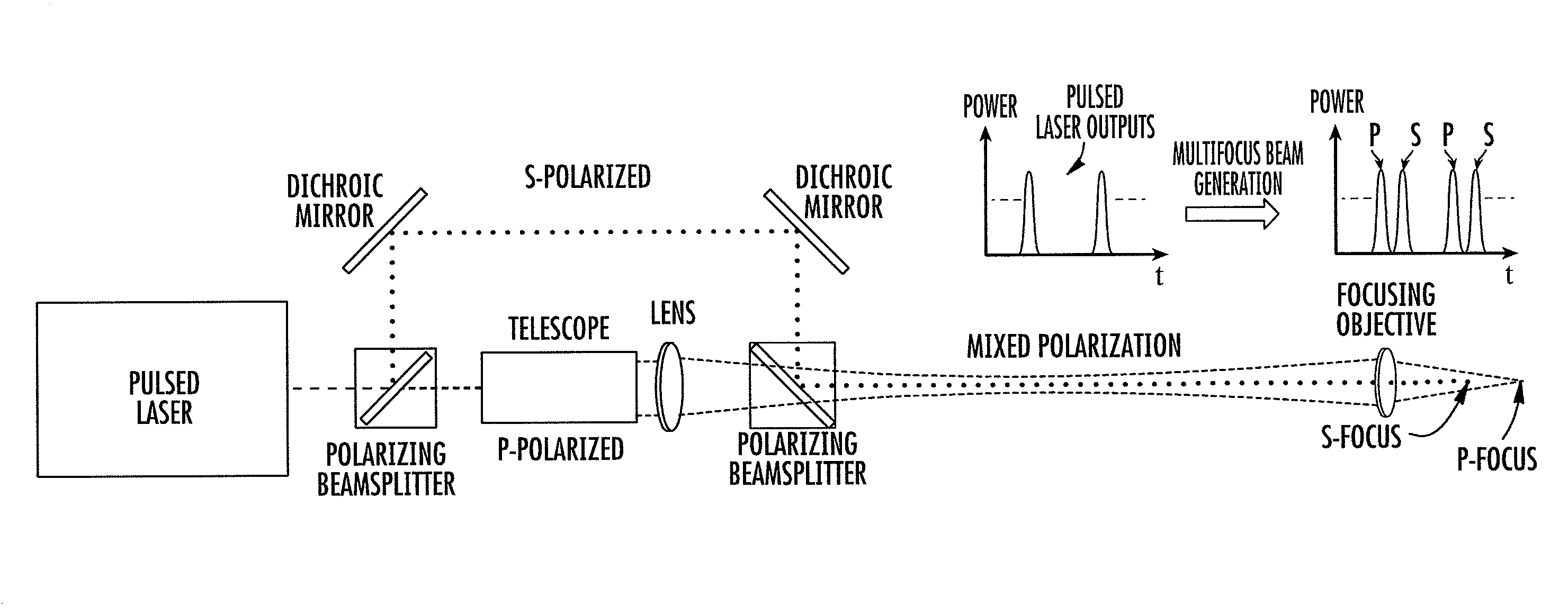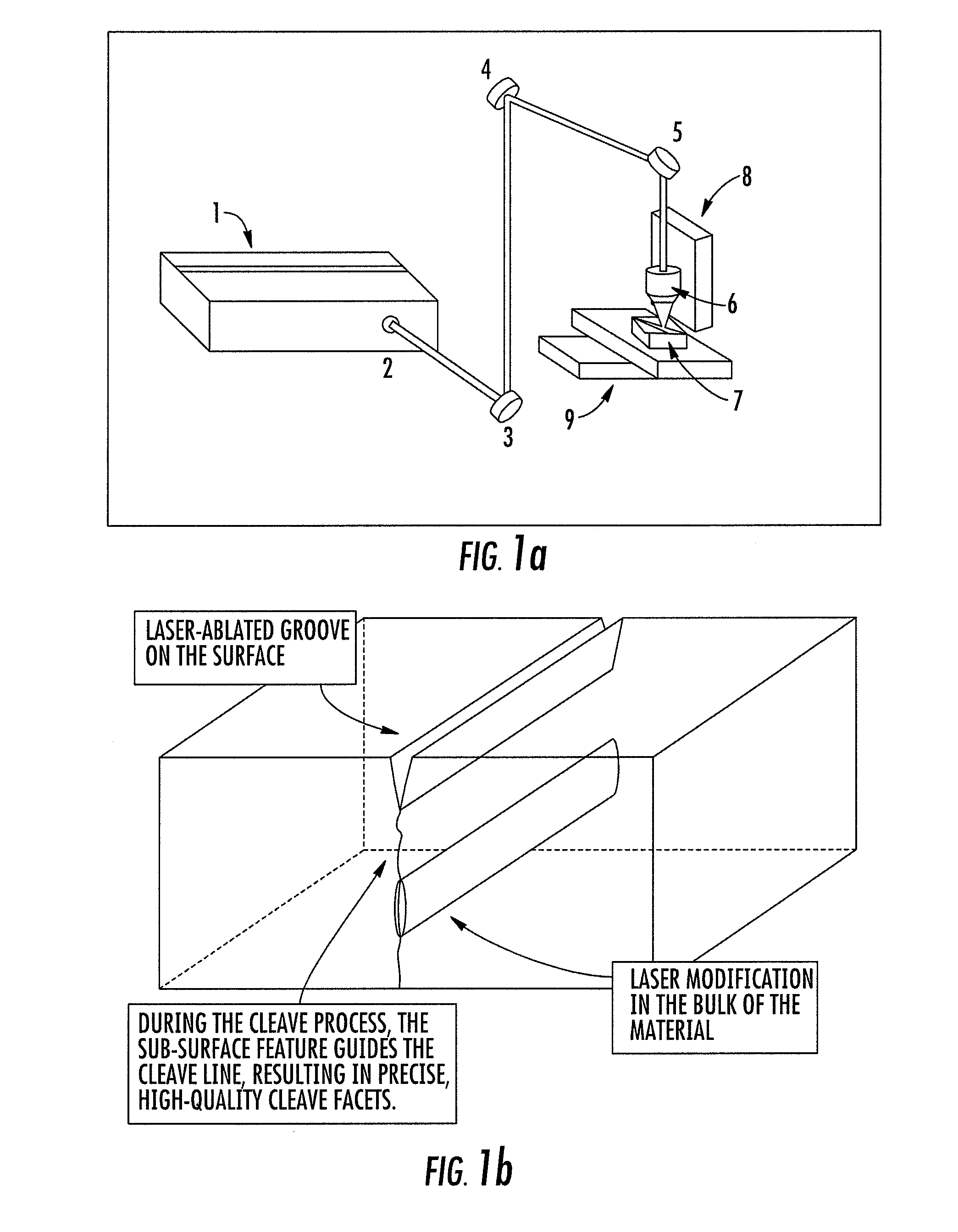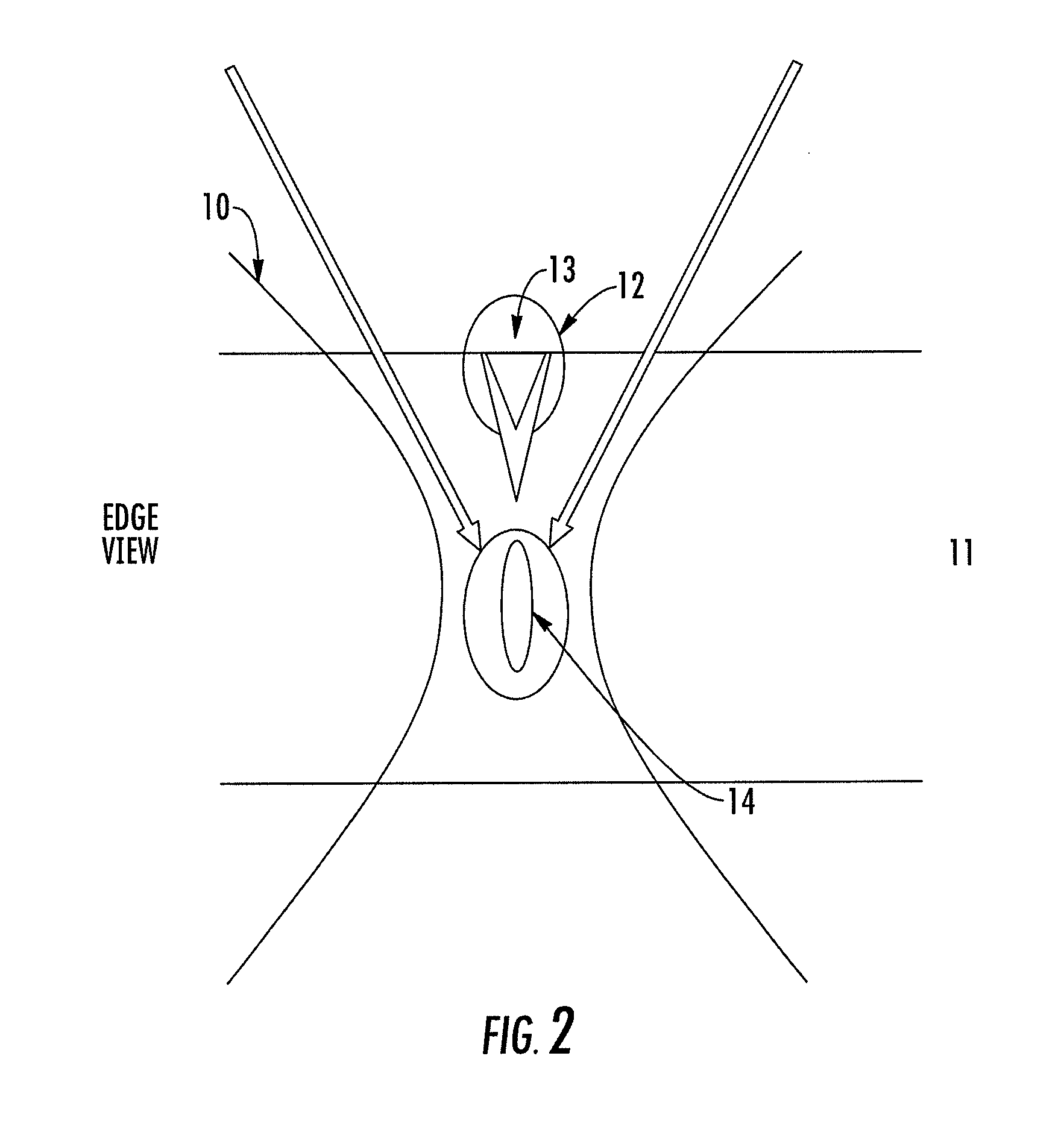Transparent material processing with an ultrashort pulse laser
a technology of ultrashort pulse laser and transparent material, which is applied in the direction of glass reforming apparatus, thermography, printing, etc., can solve the problems of poor cleaving process precision, low quality of cleaving facets, and additional interaction, so as to improve material processing results and improve processing speed
- Summary
- Abstract
- Description
- Claims
- Application Information
AI Technical Summary
Benefits of technology
Problems solved by technology
Method used
Image
Examples
Embodiment Construction
1. Ultrashort Pulse Laser Scribing
[0092]FIG. 1 illustrates one embodiment of the current invention, which is a method for scribing transparent materials for subsequent cleaving. This embodiment employs a laser system (1) producing a beam of ultrashort laser pulses (2), an optical system (6) that generates a desired laser beam intensity distribution, and a target material (7) to be scribed that is transparent to the wavelength of the laser pulses. In addition, a Z-axis stage (8) is used for beam focus position control (depth), and an automated X-Y axis stage assembly (9) is generally required for moving the work pieces (7) laterally relative to the focused laser beam. Alternatively, the laser beam (2) could be moved relative to a stationary target material with the use of scanning mirrors (3), (4), and (5).
[0093]The laser beam (2) is directed through the optical system (6), which transforms the laser beam (2) to create a desired 3-dimensional intensity distribution. Particular region...
PUM
| Property | Measurement | Unit |
|---|---|---|
| time | aaaaa | aaaaa |
| melting temperature | aaaaa | aaaaa |
| melting temperature | aaaaa | aaaaa |
Abstract
Description
Claims
Application Information
 Login to View More
Login to View More - R&D
- Intellectual Property
- Life Sciences
- Materials
- Tech Scout
- Unparalleled Data Quality
- Higher Quality Content
- 60% Fewer Hallucinations
Browse by: Latest US Patents, China's latest patents, Technical Efficacy Thesaurus, Application Domain, Technology Topic, Popular Technical Reports.
© 2025 PatSnap. All rights reserved.Legal|Privacy policy|Modern Slavery Act Transparency Statement|Sitemap|About US| Contact US: help@patsnap.com



